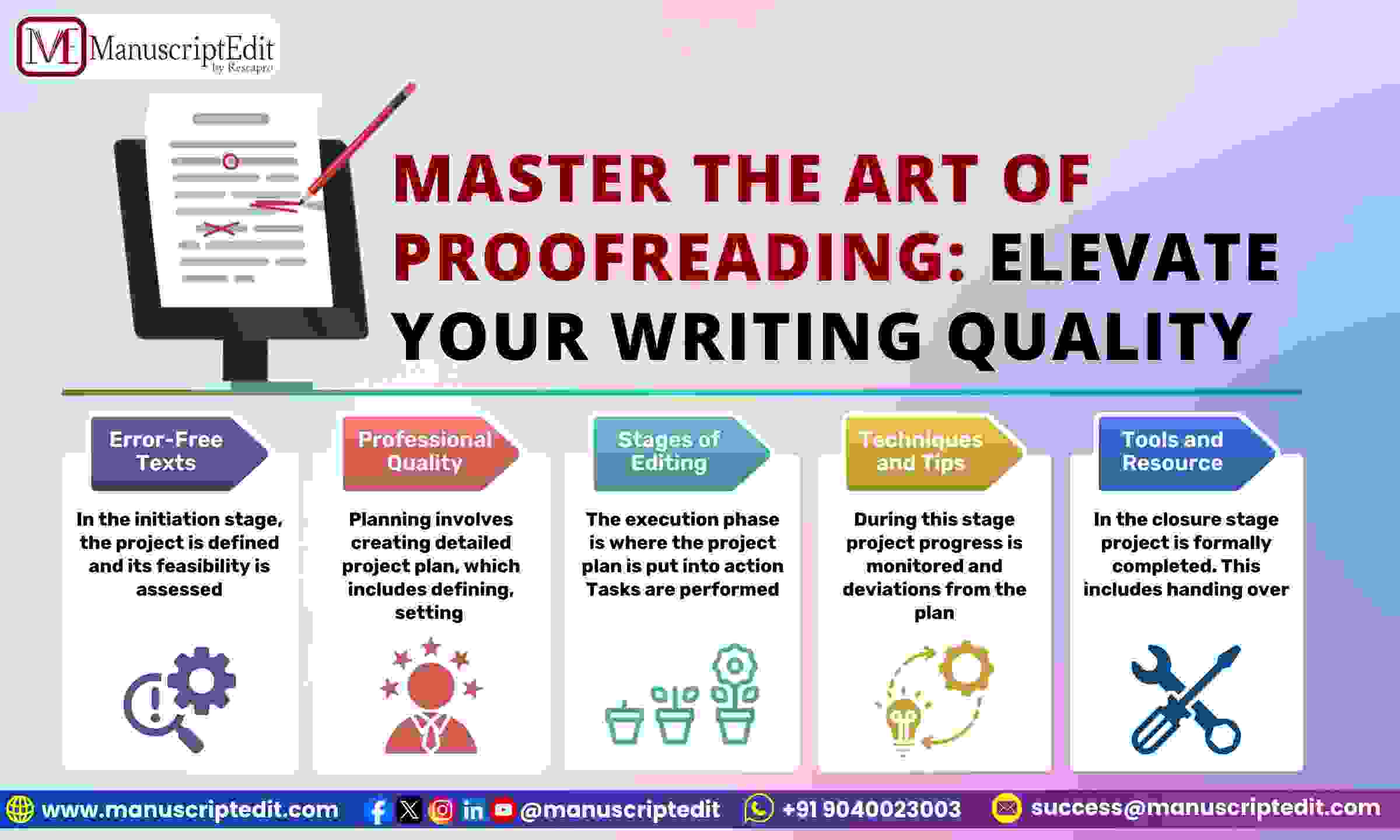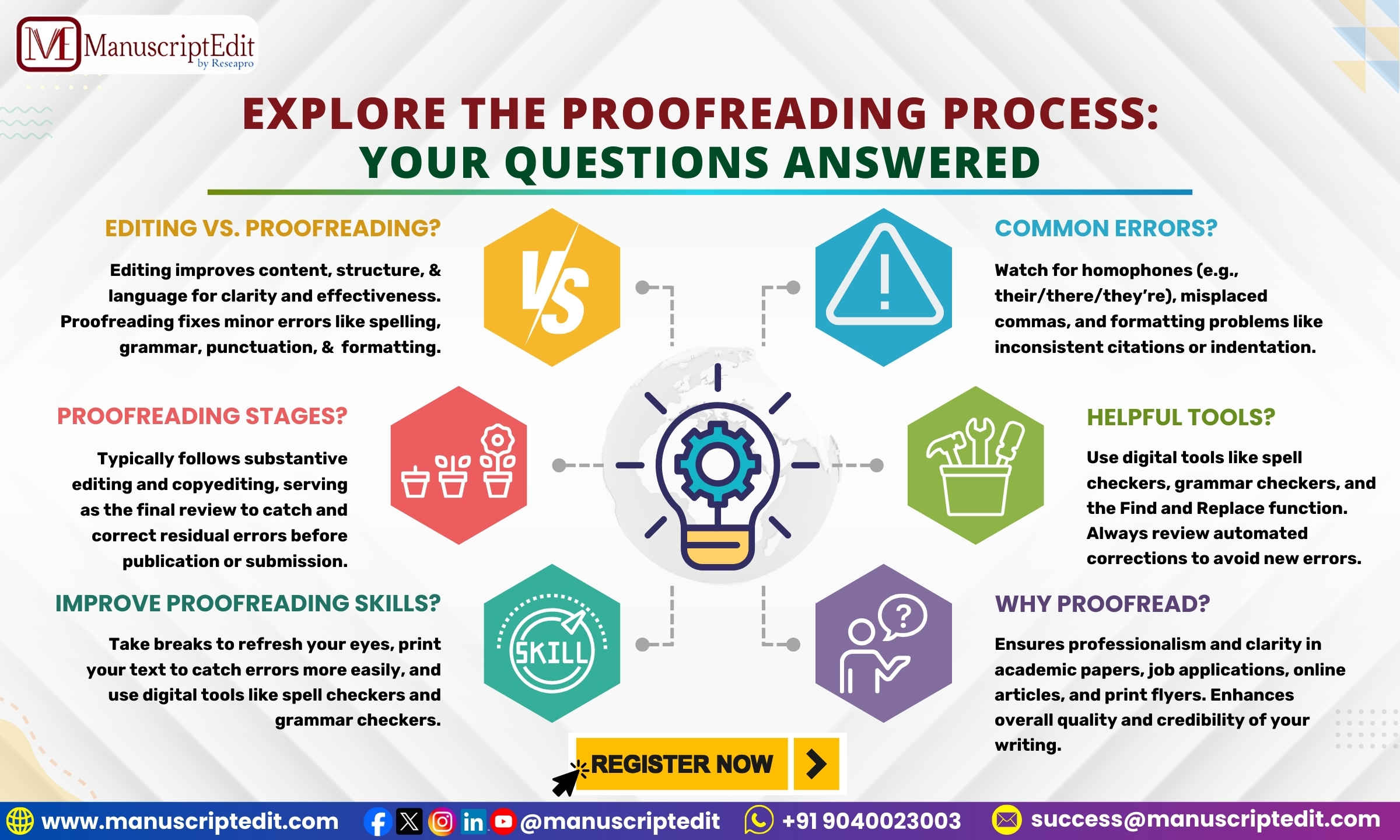|
Getting your Trinity Audio player ready...
|
Proofreading Explained: A Detailed Guide
In any writing process, proofreading is a vital final step that ensures clarity, accuracy, and professionalism. Whether you’re crafting an academic paper, a blog post, or a business report, proofreading can be the difference between a polished piece and one riddled with errors. But what exactly does proofreading entail, and how does it differ from other editing processes? Let’s dive into a detailed exploration of proofreading.

What Is Proofreading?
Proofreading is the meticulous process of reviewing a document to identify and correct minor errors. These errors may include spelling mistakes, grammatical issues, punctuation errors, and formatting inconsistencies. Proofreading is typically the final stage before a document is published or submitted, ensuring that it’s polished and error-free.
Proofreading in Print vs. Digital Documents
In traditional publishing, proofreaders often work on printed “proof copies” of texts, using specialized symbols to mark corrections. However, in the digital age, proofreaders primarily work with electronic documents, utilizing tools like Microsoft Word’s track changes or Google Docs to suggest corrections.
The Difference Between Proofreading and Editing
Although editing and proofreading are related, they serve distinct purposes.
Editing: The Big Picture
Editing is a more comprehensive process that often involves reworking the content and structure of a document. Editors may make significant changes to enhance the flow, clarity, and effectiveness of the message. It includes developmental editing, line editing, and copyediting.
-
Developmental Editing
involves major revisions to content and structure, including adding, removing, or reorganizing sections.
-
Line Editing
focuses on improving sentence flow, readability, and clarity by rephrasing or restructuring paragraphs.
-
Copyediting
polishes individual sentences for grammar, punctuation, and style without changing the overall meaning of the text.
Proofreading: The Final Polish
Proofreading, on the other hand, focuses solely on catching minor errors after the editing process is complete. It’s the last line of defense before a document is finalized. The goal is to eliminate any lingering mistakes in grammar, spelling, punctuation, and formatting.
Why Proofreading Matters
Whether you’re a student submitting a term paper or a business professional sending out a report, the accuracy of your writing reflects directly on you. Errors in your text can undermine credibility, confuse readers, and diminish the impact of your work. Here’s why proofreading is essential:
Key Benefits of Proofreading:
- Enhances Professionalism: A thoroughly proofread document presents you as detail-oriented and professional.
- Improves Clarity: Proofreading helps clarify meaning by eliminating confusing errors.
- Boosts Credibility: Error-free content helps establish trust with your audience.
Proofreading Tips for Success
Effective proofreading requires attention to detail and patience. Here are some proven strategies to help you become a better proofreader:
1. Take a Break Before Proofreading
One of the best ways to improve your proofreading effectiveness is to step away from your text for a while. When you return with fresh eyes, you’re more likely to spot mistakes.
2. Print It Out
Although proofreading on a screen is convenient, reviewing a printed version can help you catch errors you might miss in digital format. The physical act of reading on paper often reveals formatting issues and typos that are easily overlooked on a screen.
3. Read Aloud
Reading your work aloud forces you to slow down and helps you hear mistakes that your eyes might have glossed over. It’s a simple yet powerful way to catch awkward phrasing and missing words.
4. Use Digital Tools Wisely
Spell checkers and grammar tools, like Grammarly or Microsoft Word’s built-in tools, can catch many mistakes, but don’t rely on them entirely. Always review suggested corrections, as these tools may miss context or suggest incorrect changes.
5. Focus on One Type of Error at a Time
To avoid feeling overwhelmed, try focusing on one category of error at a time. For instance, review the document for punctuation mistakes first, then move on to grammar, spelling, and formatting.
Common Errors to Watch For in Proofreading
There are several types of errors to keep an eye out for when proofreading:
- Spelling Errors: Watch for misspellings or autocorrect errors that might have slipped through.
- Homophones: Words like “there,” “their,” and “they’re” can easily be confused.
- Punctuation Mistakes: Missing or misplaced commas, apostrophes, and periods are common.
- Inconsistent Formatting: Make sure fonts, headings, line spacing, and margins are consistent throughout the document.
Proofreading in Professional Settings
In a professional setting, proofreading is critical for maintaining a high standard of communication. Whether it’s a business proposal, a marketing brochure, or a press release, ensuring your document is error-free can help build credibility with clients and stakeholders.
Choosing a Professional Proofreading Service
If proofreading isn’t your strong suit, or if you’re working on a particularly important document, you might consider hiring a professional proofreader. When choosing a proofreading service, consider the following:
- Specialization: Does the proofreader specialize in your type of document (e.g., academic papers, business documents)?
- Turnaround Time: How quickly can they return the proofread document?
-
Pricing: Is the cost based on word count, page count, or an hourly rate?
Conclusion
Proofreading is a vital step in the writing process that should never be overlooked. By catching and correcting minor errors, you ensure that your message is communicated clearly and professionally. Whether you’re doing it yourself or using a professional service, proofreading is key to making sure your writing leaves the best possible impression.




